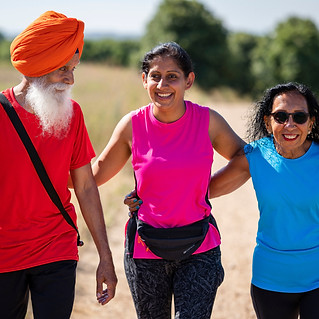
Technological loneliness
How we can use technology for meaningful connection
Technology is great in many ways for bringing us together. But it can also alienate and drive us apart. We are experiencing higher levels of loneliness across society, the 16-24 age group in particular, and studies have shown that technology has played a significant part in that. At the other end of the scale, what if you aren’t online and feel increasingly alienated in a technology-focused world? We’ll talk more about social media and how to use it positively later, but let’s look at the wider role of technology and how it has changed the way we interact with each other.
Speaking
Even before the pandemic, loneliness was becoming more prevalent in everyday life. Studies have shown that technology has played a part in that. From our workplaces (see loneliness at work), to how we socialise and shop, we have moved more and more of our lives online. Instead of meeting up with friends, we’re in numerous Whatsapp groups with them and rather than check-in with someone, we’ll often check out their social media feed instead.
Shopping
We were already shopping more online and since the pandemic one-quarter of the UK population or 17.2 million people have said they would switch to shopping online permanently. With global retailers like Amazon becoming a one-stop-shop for everything, shopping has become less a social outing (and no more stressful crowds) and more a service we can have delivered without us having to step outside our front door.
Socialising and leisure time
For those of us with online TV subscription services like Netflix and Amazon, we don’t have to go out to the cinema and can instead watch everything from the comfort of our sofa. With popular food delivery services like Deliveroo on tap, our desire to go out to restaurants has waned. Online yoga and exercise classes have replaced real-life ones. If we do go out to the supermarket we would probably use a self-service checkout instead. We don’t go to the bank and speak to someone or queue at the ATM, we do it all online instead.
The bad...
We use technology because it’s easy and efficient. The downside is that we can start to miss out on all the human interactions that go with those acts. We might feel like we are ‘busy’ all the time on our different devices but the reality is that many of us have become deprived of regular real-life contact.
While communicating online can be great for sharing funny things or information, it isn’t the same as meeting up with someone in real life. As humans, we are biologically hard-wired for the physical presence of others. Without someone standing in front of us, it’s harder to know how they’re really feeling and we’re less likely to ask or share how we’re feeling ourselves. Studies have shown that eye contact increases oxytocin, known as the ‘feel-good’ hormone, which also helps to reduce the stress hormone cortisol. So let’s start seeing eye to eye with people again!
The good...
There are many good things about technology and it has been a lifeline throughout the pandemic. From family Whatsapp groups to online classes, to video calls and Zoom pub quizzes with work colleagues and friends, they have all been invaluable in keeping us connected with family and friends, even if we can’t see them in the flesh.
So how can we use technology to increase our sense of connection rather than the opposite?
-
Don’t always default to technology. Instead of messaging or emailing someone, pick up the phone to them instead.
-
Make sure you don’t do all your errands online. It might be less hassle but we do need to engage with the world sometimes. What have you been doing online – e.g. a food shop – that you could go out and do instead?’ Even better, if you can shop local and independent and get to know the people there
-
Swap Facetime for someone’s face in real life. Meet someone in the flesh instead. It might involve more effort to make a physical date but it will be a more satisfying social encounter in the long run.
-
Exercise outdoors. Instead of doing an online class, go for a run or meet a friend for a power walk instead.
-
Look up from your phone. Lots of us now automatically default to our phones if we’re on the bus or train or waiting in a queue. Try putting your phone away and engaging with your surroundings. Enjoy the moment – even if it is queuing at the supermarket – and be open to any spontaneous interactions.
-
Do a technology audit. Work out how much of your week you spend online and start to replace some with real-life interactions or experiences instead. Technology might be part of modern life but we shouldn’t run our whole lives through it.
.png)



.jpg)